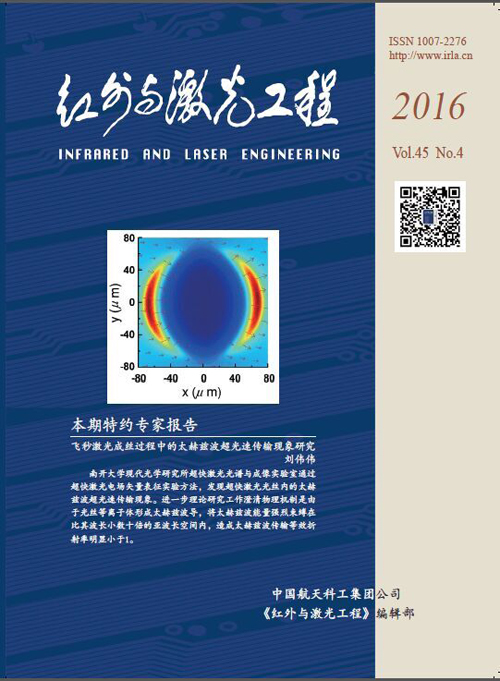|
[1]
|
Cao Z, Mu Q, Hu L, et al. Correction of horizontal turbulence with nematic liquid crystal wavefront corrector[J]. Opt Express, 2008, 16:7006-7013. |
|
[2]
|
Love G D. Wave-front correction and production of Zernike modes with a liquid-crystal spatial light modulator[J]. Appl Opt, 1997, 36:1517-1524. |
|
[3]
|
Restaino S, Dayton D, Browne S, et al. On the use of dual frequency nematic material for adaptive optics systems:first results of a closed-loop experiment[J]. Opt Express, 2000, 6:2-6. |
|
[4]
|
Neil M A A, Booth M J, Wilson T. Dynamic wave-front generation for the characterization and testing of optical systems[J]. Optics Letters, 1998, 23:1849-1851. |
|
[5]
|
Cao Z, Li X, Xuan L, et al. Recent progress in liquid crystal adaptive optics technique[J]. Chinese Optics, 2012, 5(1):12-19. (in Chinese) |
|
[6]
|
Zheng X, Liu R, Xia M, et al. Retinal correction imaging system based on liquid crystal adaptive optics[J]. Chinese Optics, 2014, 7(1):98-104. (in Chinese) |
|
[7]
|
Burns D C, Underwood I, Gourlay J, et al. A 256256 SRAM-XOR pixel ferroelectric liquid crystal over silicon spatial light modulator[J]. Optics Communications, 1995, 119:623-632. |
|
[8]
|
Peng Z, Liu Y, Cao Z, et al. Fast response property of low-viscosity difluorooxymethylene-bridged liquid crystals[J]. Liquid Crystals, 2013, 40(1):91-96. |
|
[9]
|
Peng Z, Liu Y, Yao L, et al. Improvement of the switching frequency of a liquid-crystal spatial light modulator with optimal cell gap[J]. Optics Letters, 2011, 36(18):3608-3610. |
|
[10]
|
Hu H, Hu L, Peng Z, et al. Advanced single-frame overdriving for liquid-crystal spatial light modulators[J]. Optics Letters, 2012, 37(16):3324-3326. |
|
[11]
|
Love G D. Liquid crystal phase modulator for unpolarized light[J]. Appl Opt, 1993, 32(13):2222-2223. |
|
[12]
|
Love G D, Restaino S R, Carreras R C, et al. Polarization insensitive 127-segment liquid crystal wavefront corrector[C]//OSA Summer Topical Meeting on Adaptive Optics, 1996. |
|
[13]
|
Stockley J E, Sharp G D, Serati S A, et al. Analog optical phase modulator based on chiral smectic and polymer cholesteric liquid crystals[J]. Opt Lett, 1995, 20:2441-2443. |
|
[14]
|
Gu Naiting, Yang Zeping, Huang Linhai, et al. Measurement method of misalignment for Hartmann-Shack sensor and deformable mirror in adaptive optics system[J]. Infrared and Laser Engineering, 2011, 40(2):287-292. (in Chinese) |
|
[15]
|
Liu Ruixue, Zheng Xialiang, Xia Mingliang, et al. Accurate fixation of adaptive optics fundus imaging field of view based on visual target guidance[J]. Infrared and Laser Engineering, 2015, 44(6):1794-1799. (in Chinese) |
|
[16]
|
Mu Quanquan, Cao Zhaoliang, Li Dayu, et al. Open-loop correction of horizontal turbulence:system design and result[J]. Applied Optics, 2008, 47(23):4297-4301. |
|
[17]
|
Chen H, Xuan L, Hu L, et al. Optical design of miniaturization aberration correcting system for human eye[J]. Optics and Precision Engineering, 2010, 18:29-36. (in Chinese) |
|
[18]
|
Cheng Shaoyuan, Cao Zhaoliang, Hu Lifa, et al. Design of open loop liquid crystal adaptive optical system for 1200 mm telescope[J]. Infrared and Laser Engineering, 2010, 39(2):288-291. (in Chinese) |
|
[19]
|
Vogel C R, Yang Q. Modeling, simulation, and open-loop control of a continuous facesheet MEMS deformable mirror[J]. J Opt Soc Am A, 2006, 23:1074-1081. |
|
[20]
|
Blain C, Guyon O, Conan R, et al. Simple iterative method for open-loop control of MEMS deformable mirrors[C]//SPIE, 2008, 7015:701534. |
|
[21]
|
Guzman D, Guesalaga A, Myers R, et al. Deformable mirror controller for open-loop adaptive optics[C]//SPIE, 2008, 7015:70153X. |
|
[22]
|
Thibos L N, Bradley A. Use of liquid-crystal adaptive-optics to alter the refractive state of the eye[J]. Optometry and Vision Science, 1997, 74:581-587. |
|
[23]
|
Cao Z, Xuan L, Hu L, et al. Investigation of optical testing with a phase-only liquid crystal spatial light modulator[J]. Opt Express, 2005, 13:1059-1065. |
|
[24]
|
Mu Q, Cao Z, Hu L, et al. Novel spectral range expansion method for liquid crystal adaptive optics[J]. Optics Express, 2010, 18(21):21687-21696. |
|
[25]
|
Laude V. Twisted nematic liquid-crystal pixelated active lens[J]. Optics Communications, 1998, 153:134-152. |
|
[26]
|
Cao Z, Mu Q, Hu L, et al. Optimal energy-splitting method for an open-loop liquid crystal adaptive optics system[J]. Opt Express, 2012, 20:19331-19342. |
|
[27]
|
Xia M, Li C, Liu Z, et al. Adaptive threhold section method for Shack-Hartmann wavefront sensor[J]. Optics and Precision Engineering, 2010, 18:334-340. (in Chinese) |









 DownLoad:
DownLoad: